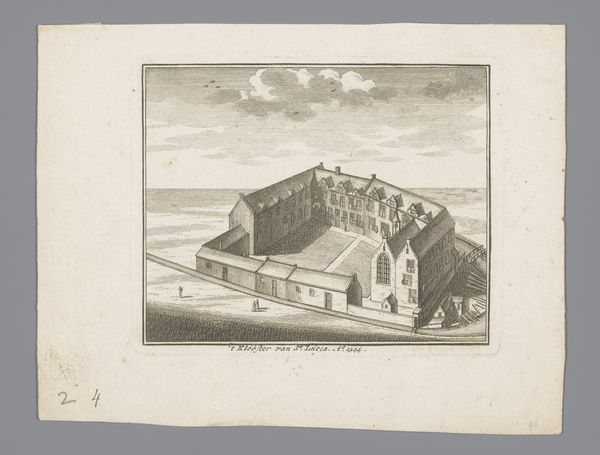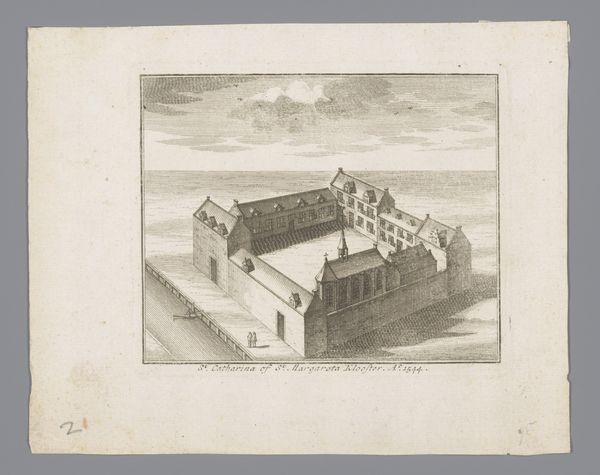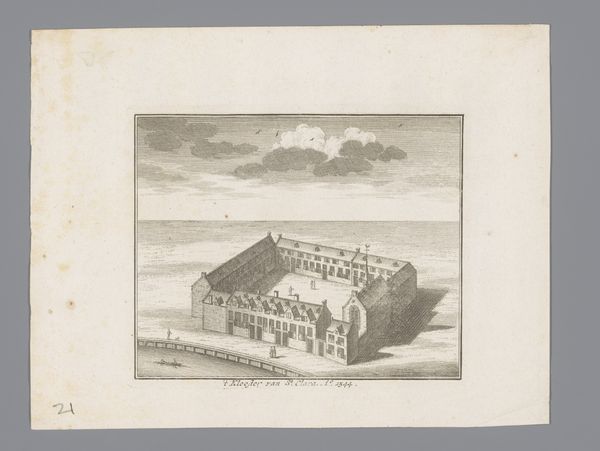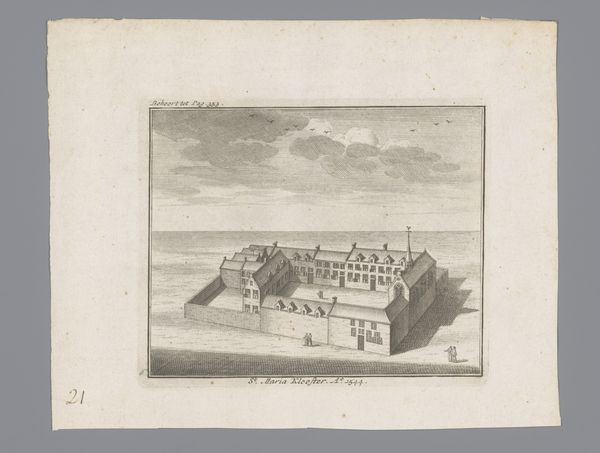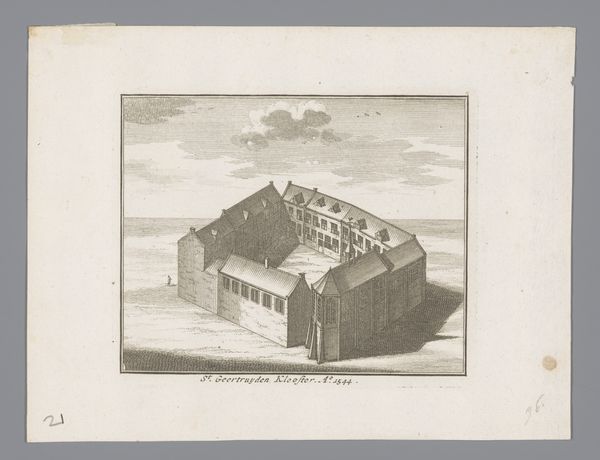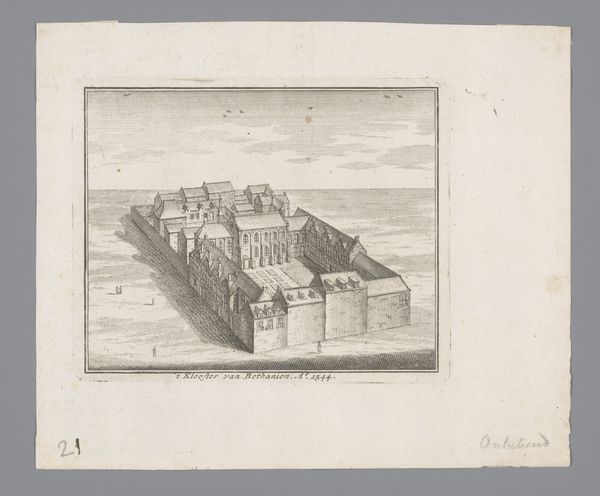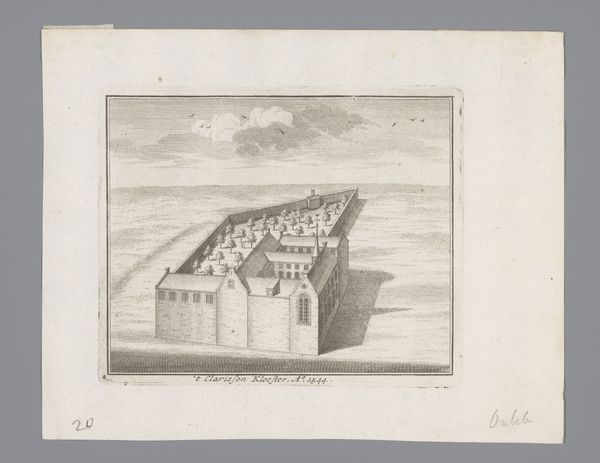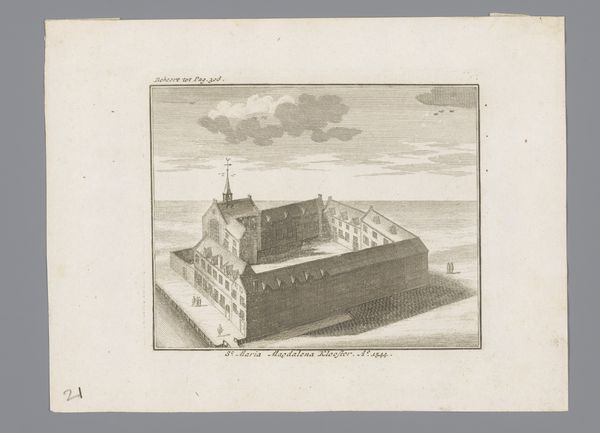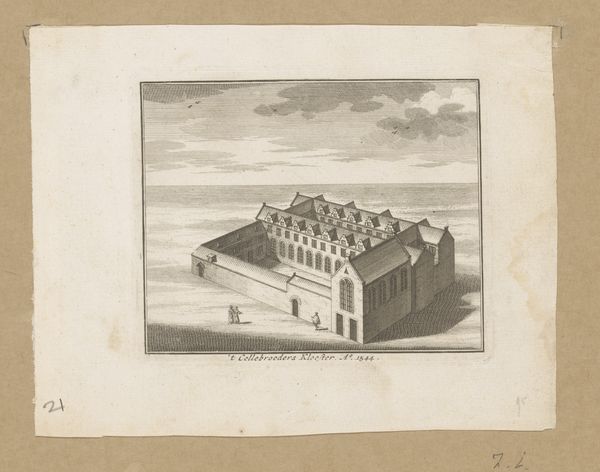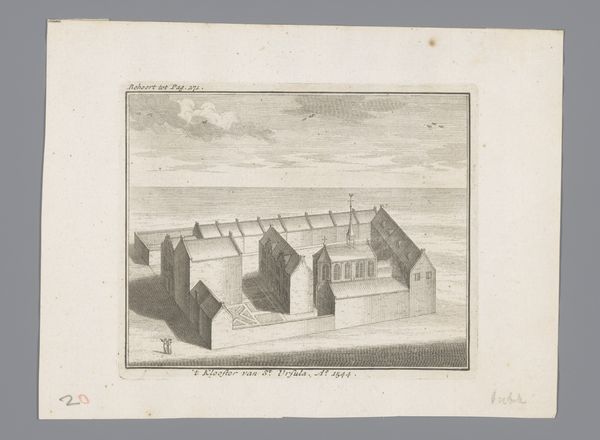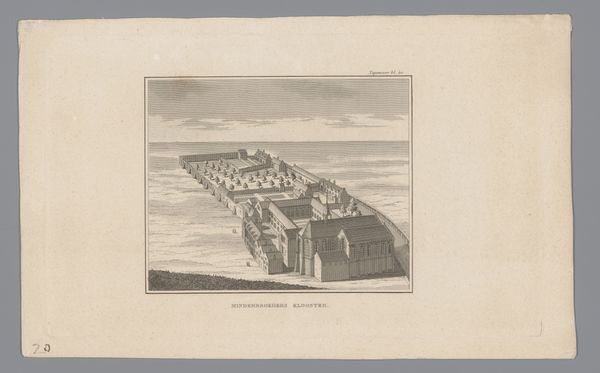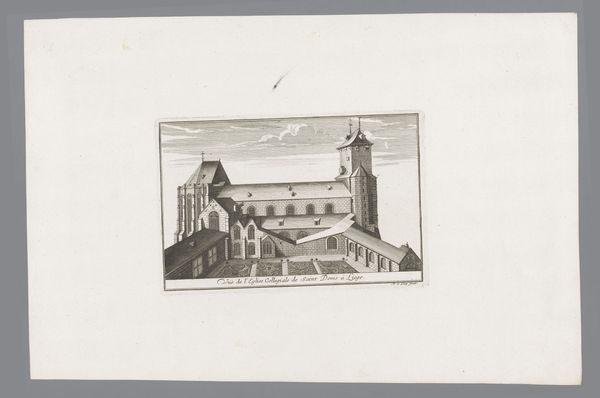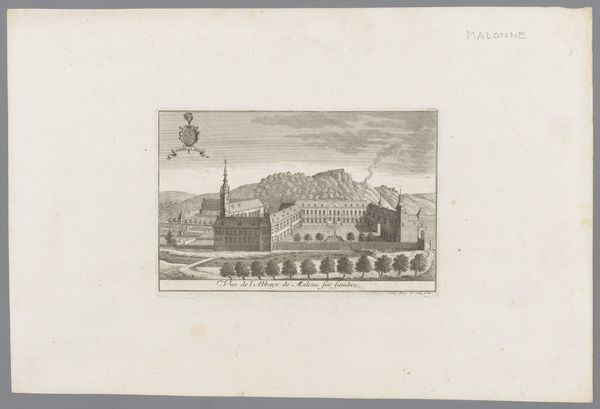
print, engraving, architecture
#
baroque
# print
#
cityscape
#
engraving
#
architecture
Dimensions: height 111 mm, width 135 mm
Copyright: Rijks Museum: Open Domain
Curator: This engraving, titled "Bird's-Eye View of St. Cecilia's Convent, 1544", dates from around 1729 and gives us a remarkably detailed Baroque perspective on the convent grounds. It is attributed to an anonymous artist. Editor: My first impression is the feeling of order. Even with the implied vastness of the sky and surrounding land, the convent stands as a precise, contained space. The meticulous lines create a very controlled mood. Curator: The use of perspective does create that sense of control, doesn’t it? Bird's-eye views were popular during this time for showing not just physical space, but also implying dominion, a command of one’s environment, almost. How might the religious community connect to this visual message? Editor: Well, looking at it, one immediately understands that in the Baroque era the bird's eye perspective often acted as a representation of enlightenment or God's eye. The viewer, in absorbing the scene, might subconsciously internalize such moral hierarchy. This image is almost architectural in nature. Is this how Baroque values permeated daily life, from the urban scale to even how the cloistered were meant to exist? Curator: The layout itself echoes that impulse for hierarchical order, with each wing likely having designated activities, echoing Baroque society with distinct spaces, and almost ceremonial functions. Notice the bridge as an explicit point of entry and exit: the liminal space where inside/outside dichotomy could merge, creating, perhaps, both community access, but on prescribed terms. Editor: Right! The bridge isn’t merely a feature; it's part of the visual symbolism. That’s Baroque period for you – nothing accidental, always serving a grand scheme. The shading and light give dimension but maintain the precision of its form, almost a godly architect imposing this spiritual container on the landscape. The visual harmony that has to exist and function as an agent. Curator: Yes, in a curious way the engraver does capture how buildings and lived space come to embed, and reflect, larger social-political visions. By showing, in careful detail, that sense of prescribed order of the St. Cecilia cloister, this engraver created, or rather passed down, the enduring idea of divine order. Editor: So true, in the end what resonates the most here is seeing the complex tapestry woven from structure, belief, and daily ritual all articulated by lines carefully planned out over space and time.
Comments
No comments
Be the first to comment and join the conversation on the ultimate creative platform.
